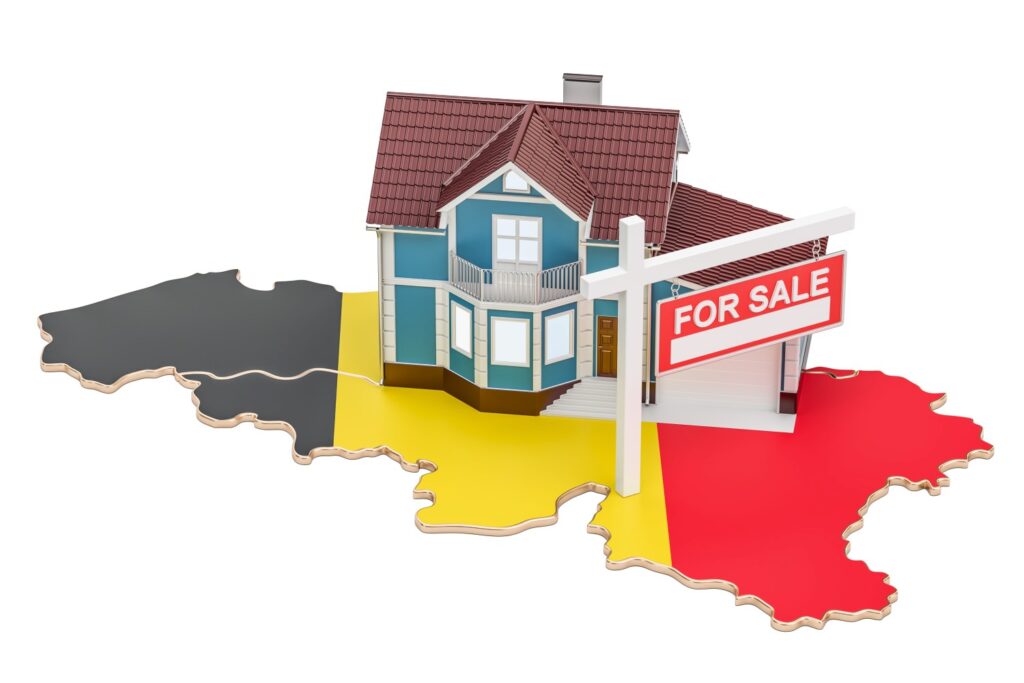The real estate market often serves as a barometer for the overall health of an economy, and recent statistics have raised eyebrows and prompted questions about the stability and future of this sector. A notable 15.2% decrease in property sales has led many to wonder: Is the real estate market in freefall?

National Transaction Trends
At a national level, the real estate transaction volume has experienced a modest dip of 1.1%. While this decrease might seem insignificant at first glance, a closer look reveals a more concerning statistic – a 15.2% drop in the sales of houses and apartments. Renaud Grégoire, a notary and spokesperson for Notaire.be, attributes this downturn to two main factors: the rise in interest rates and the overall economic situation, both of which have led to a cooling of the market.
Regional Disparities and Price Stability
The impact of this downturn is not uniform across all regions. Flanders has experienced the sharpest decline, with sales plummeting by 16.9% compared to 2022. Wallonia and Brussels follow suit with respective decreases of 12.1% and 12.4%. Despite these downturns, the average prices of houses and apartments have remained relatively stable, showing a slight national average increase. The average house price now stands at 322,780 euros, a modest rise of 1.1% excluding inflation. Apartments have seen a slightly higher increase of 1.6%, with an average price of 264,792 euros.
Brussels continues to be the most expensive region, though the average price of houses there has declined over the year, from 576,576 euros to 562,489 euros. The average price of an apartment in the capital, however, remains significantly above the national average at 280,520 euros.
Wallonia shows significant price disparities between its provinces. For instance, the median price for a house in Brabant Wallon is 415,850 euros, while in Hainaut, the average cost is 195,078 euros.
In Flanders, the average cost of a house is around 358,677 euros (up by 3%), and the average price for an apartment is 276,450 euros. The cool market in Flanders could be attributed to mandatory renovation obligations and a backlash after years of boom, partly due to decreases in registration rights.
Why Aren’t Prices Falling?
Despite a decrease in demand, prices aren’t falling. This phenomenon can be explained by several factors. The cost of materials and construction, the shortage of new properties on the market, and the growing importance of Energy Performance Certificates (PEB) make high-quality properties more attractive. These properties are trading at increasingly higher prices, offsetting the stagnation in prices of properties that require renovation. The average of the two results in a stabilization of prices, even in the face of declining demand. It’s important to note that the increase in property prices should be contextualized with the prevailing inflation rate.
Future Outlook for the Real Estate Market
Looking ahead, the real estate market is likely to continue facing challenges. The tightening of financial conditions, potential increases in interest rates, and ongoing economic uncertainties are factors that could further impact the market. However, the fundamental demand for housing, driven by population growth and urbanization, might prevent a significant crash in prices.
Investor’s Perspective
From an investment standpoint, the real estate market still holds potential, especially in sectors that are less sensitive to economic fluctuations, such as rental properties and commercial real estate. Investors might find opportunities in markets that have shown resilience or in properties that cater to emerging trends, like sustainable and energy-efficient buildings.
Conclusion
The Belgian real estate market is navigating a period of uncertainty and adjustment. While the drop in sales raises concerns, the market’s fundamentals, combined with regional disparities and the resilience of property prices, suggest a complex and nuanced picture. Investors and homeowners alike should stay informed and adaptable, keeping an eye on both macroeconomic trends and local market conditions to make wise decisions in this evolving landscape.

 Open Immovlan
Open Immovlan